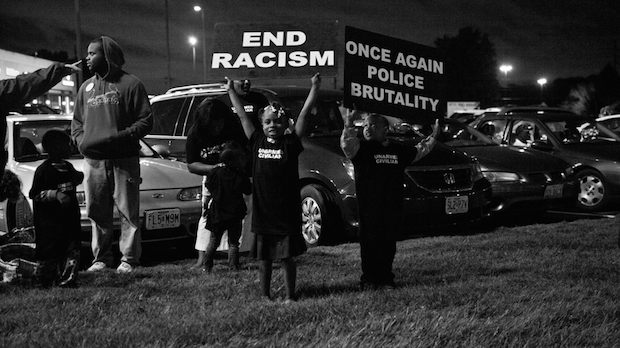 Back to selection
Back to selection
“The Story of Ferguson through the Eyes of the People Who Lived it”: Director Sabaah Folayan | Whose Streets
 Whose Streets
Whose Streets During its development, production or eventual distribution, what specific challenge of communication did, or will your film, face? How did you deal with it, or how are you planning to deal with it?
By the time we wrapped our last shooting day, we had collected over 300 hours of footage. Lungs shouted for justice and moments later filled with tear gas. A father baked cookies during a moment of peace. A police chief and a mayor cited lack of data. Our creative team quickly realized we had several possible movies on our hands, but our goal was singular; we wanted to communicate the story of Ferguson through the eyes of the people who lived it. As we looked for inspiration we came to understand our obstacle more clearly. We were entering a landscape where audiences were used to a particular type of journey. In historical moments like the one we are living through, we look for guidance in stories. One could argue that it is therapeutic to watch a person or group pursue a goal, and through some climactic moment succeed or fail, providing us with a lesson learned, and a sense of resolution. But what happens when there is no unified group, and no hero to stand in as a symbol? What becomes of the beginning, middle and end when the goal is constantly shifting and there is no clear victory in sight? The answer to these questions remained elusive for months. Our editor, Christopher McNabb, had worked through the vast bank of footage at an astonishing pace, yet with great care, parsing out moments of meaning in chaotic scenes from various archival sources, including dozens of mini-videos from Instagram and Vine, in addition to the interview and vérité footage we had shot. We knew all of these elements belonged to the world we were creating, but things still felt disparate. Reflecting on the process through the lens of issues facing our country now, it seems that story structure itself needed to be a site of resistance if we were going to tell a story with the power to transform audiences, and not just soothe them.
All of our traditions have brought us to this point, and if we hope for a better world we need to question our traditions. Filmmaking is no exception. I think of renowned Nazi propaganda film director Leni Riefenstahl, whose cinematic innovations cause her work to remain influential despite, and in a way because of, its intended purpose – reinforcing Nazi power at its peak in the minds of citizens. We are accustomed to history as interpreted by whoever is on top at the time, and our conventions lend themselves to that type of storytelling. A comment from Carol Dysinger during a feedback screening confirmed my feeling that our approach to telling this story was not only possible, but a necessary deviation from the norm. Paraphrasing, she said, “Your problem is, you’re trying to tell a community story, and people are not used to consuming films that way.” She later urged us “to find artistic solutions to these challenges,” while others suggested we were being too ambitious. Encouraged, we looked for ways to reference traditional three act structure without being bound by it. This was the key to unlocking the final iteration of the film.
[PREMIERE SCREENING: Thursday, January 19 at 9:15pm — Prospector Square Theatre]
